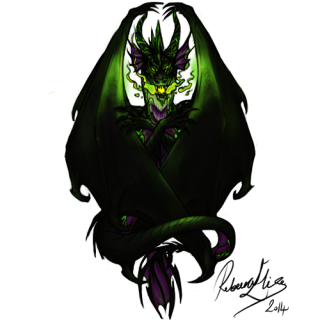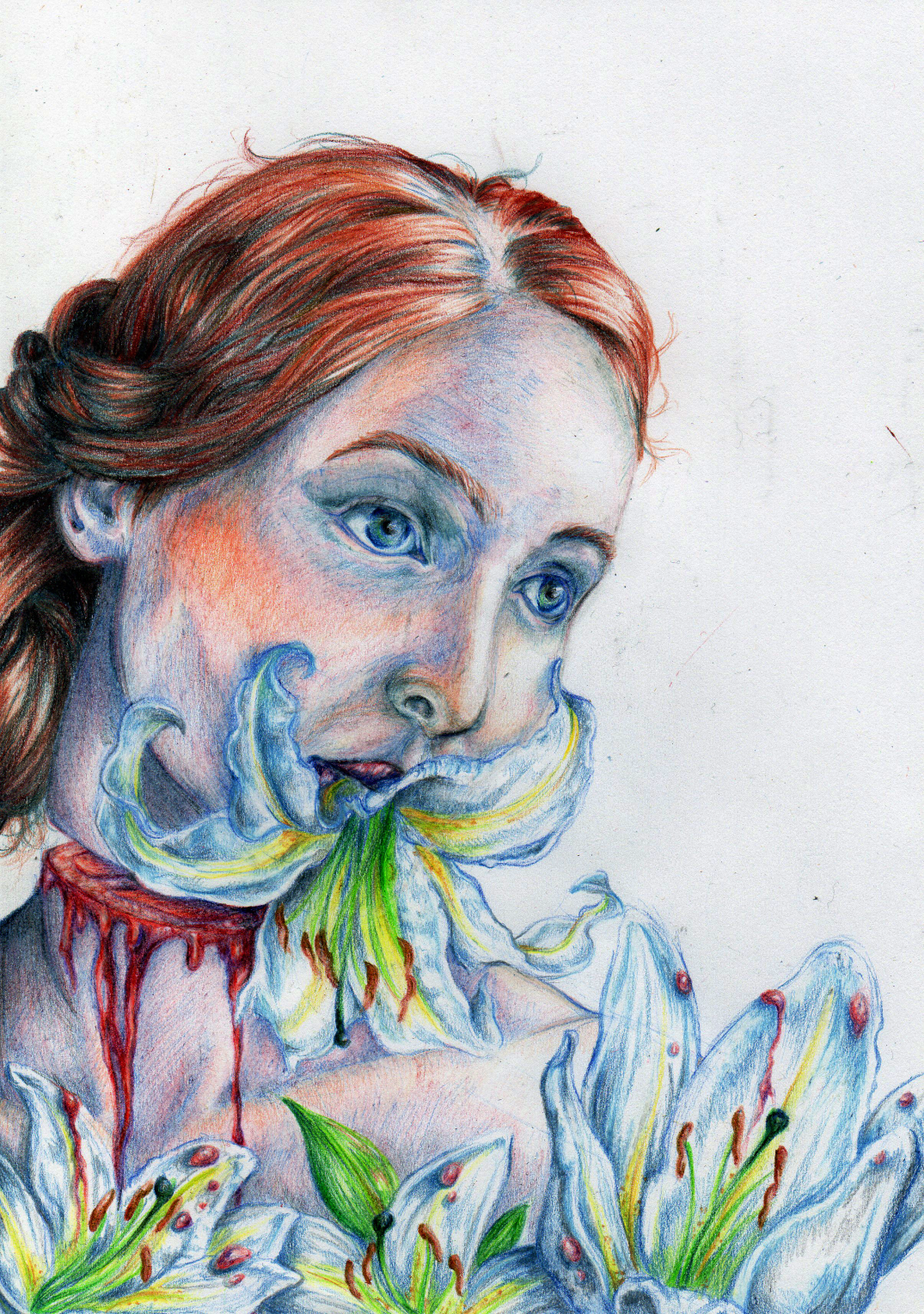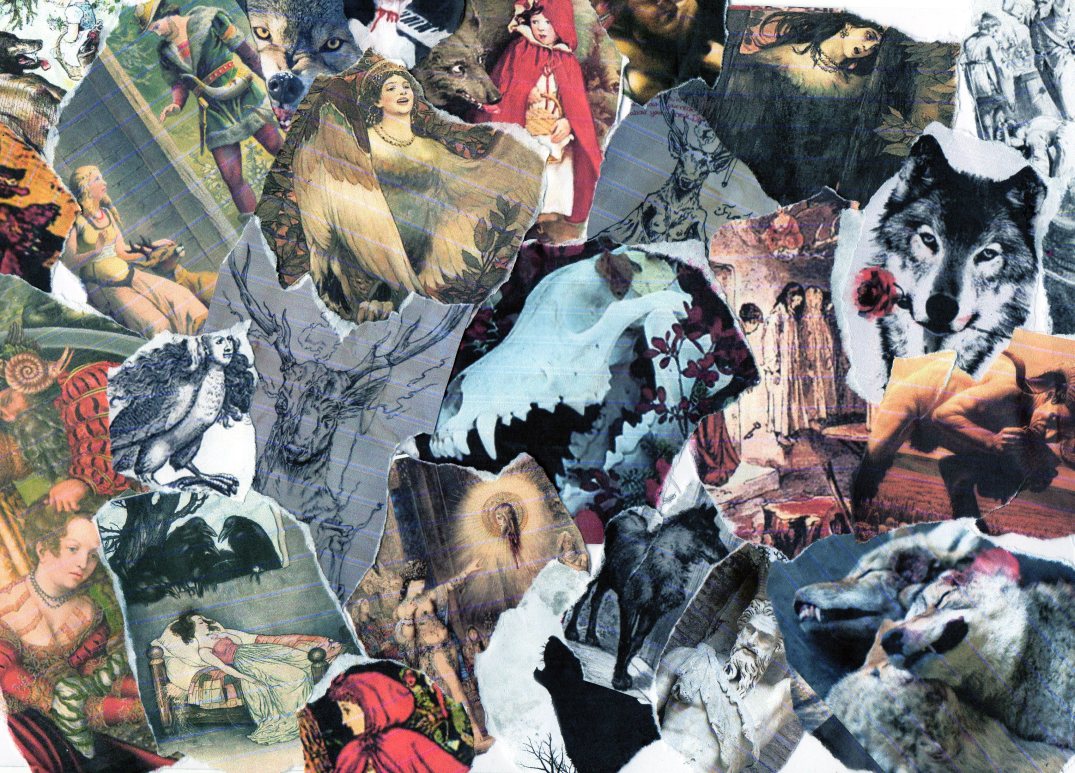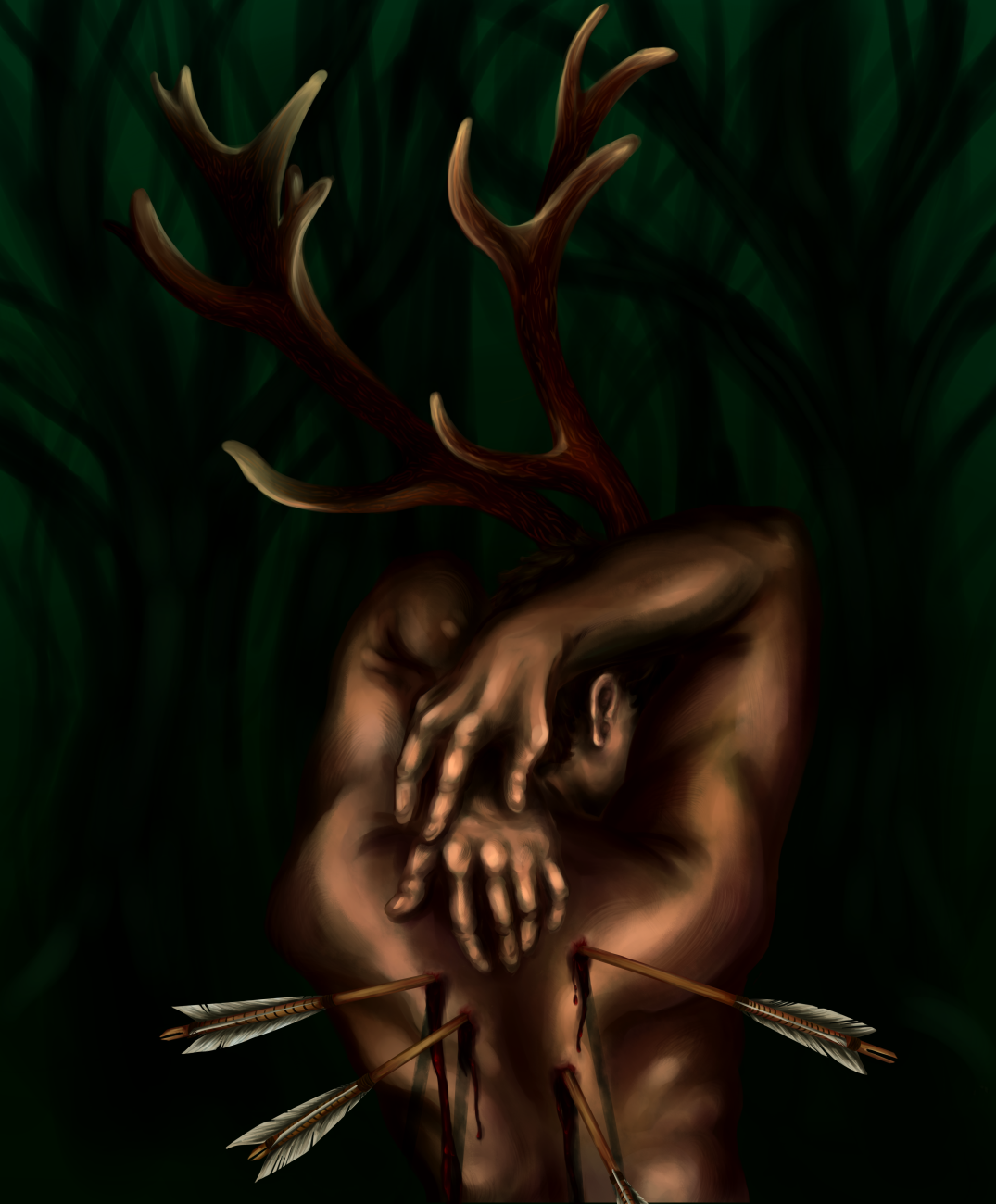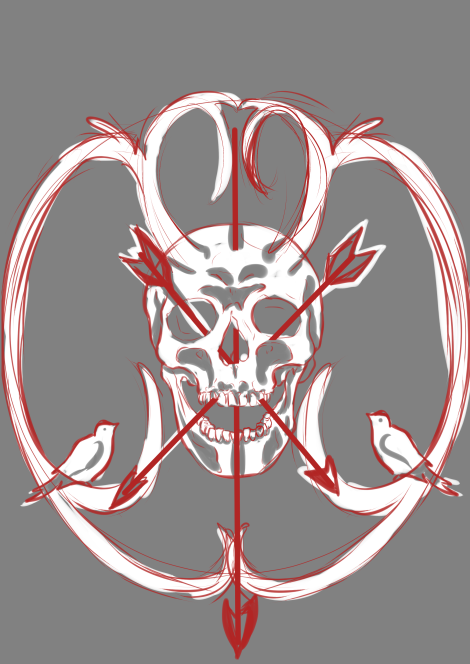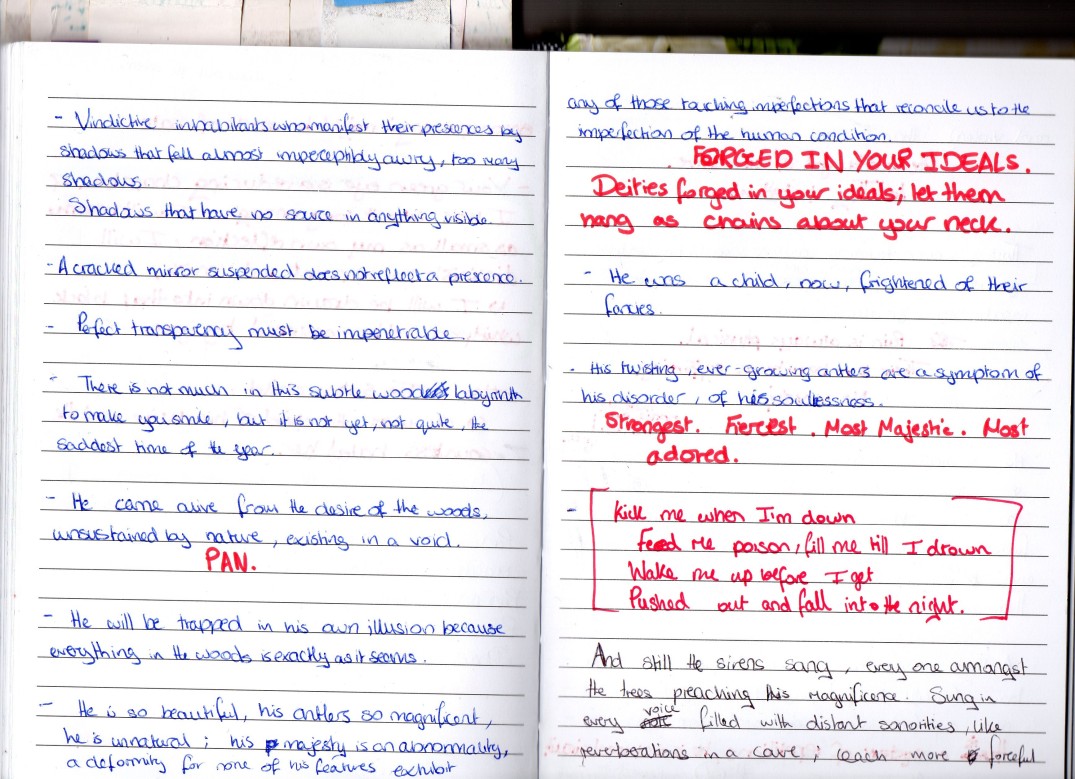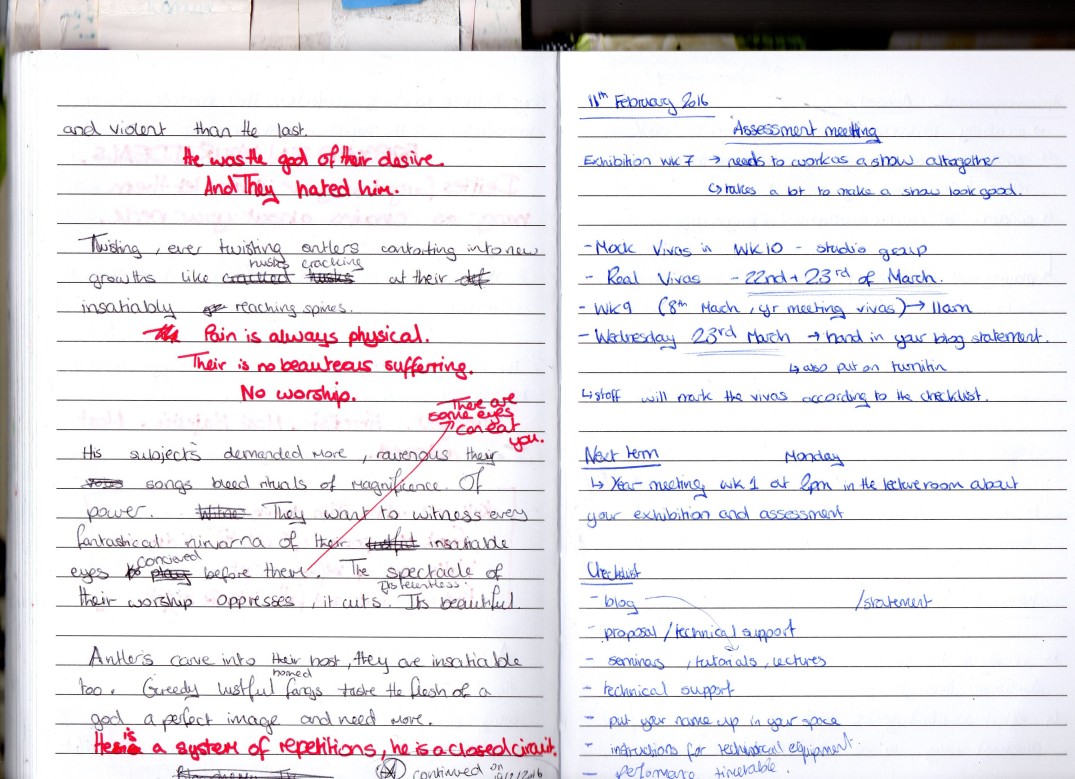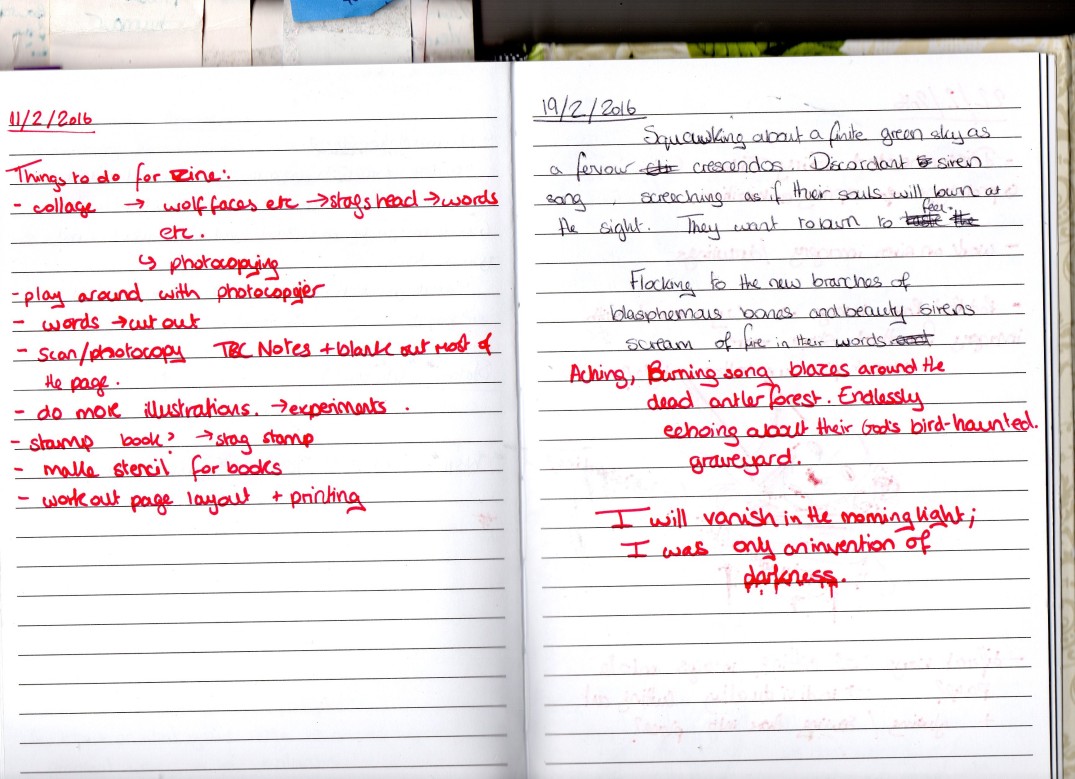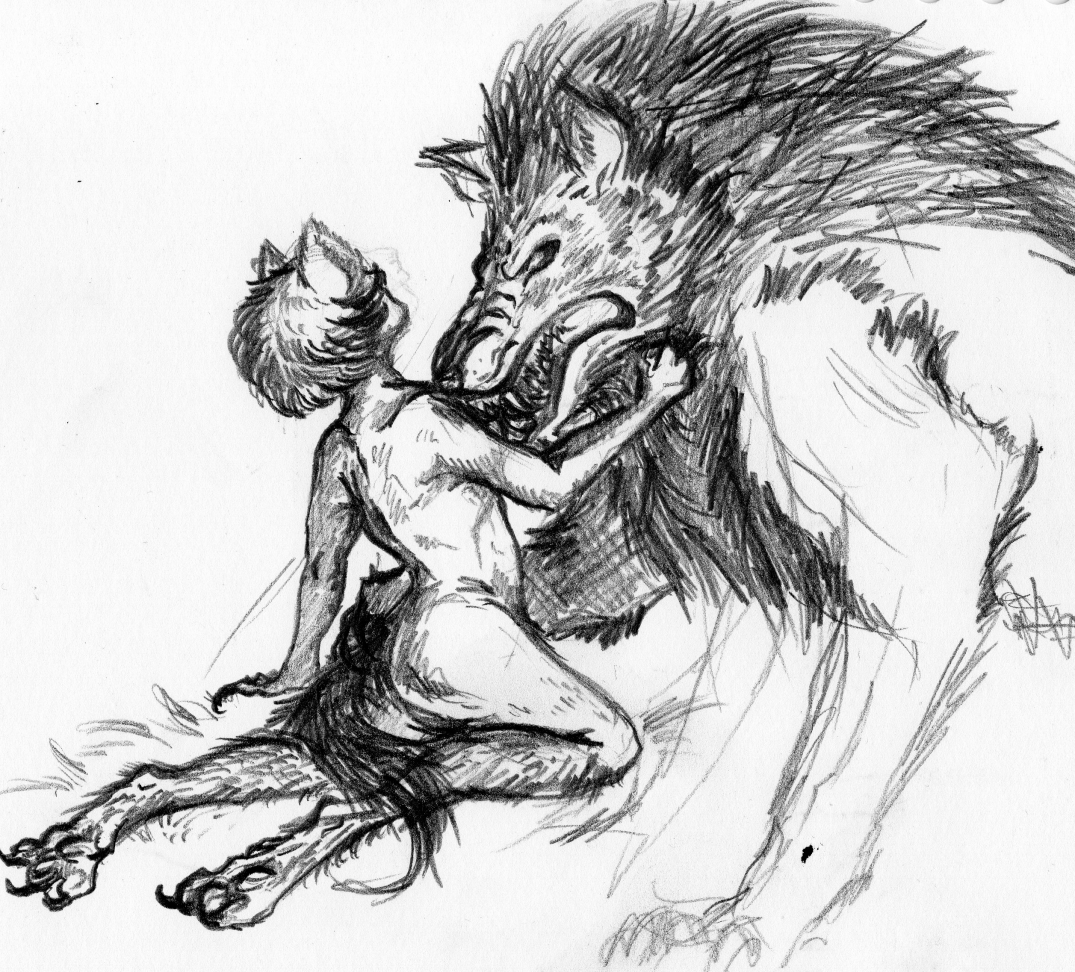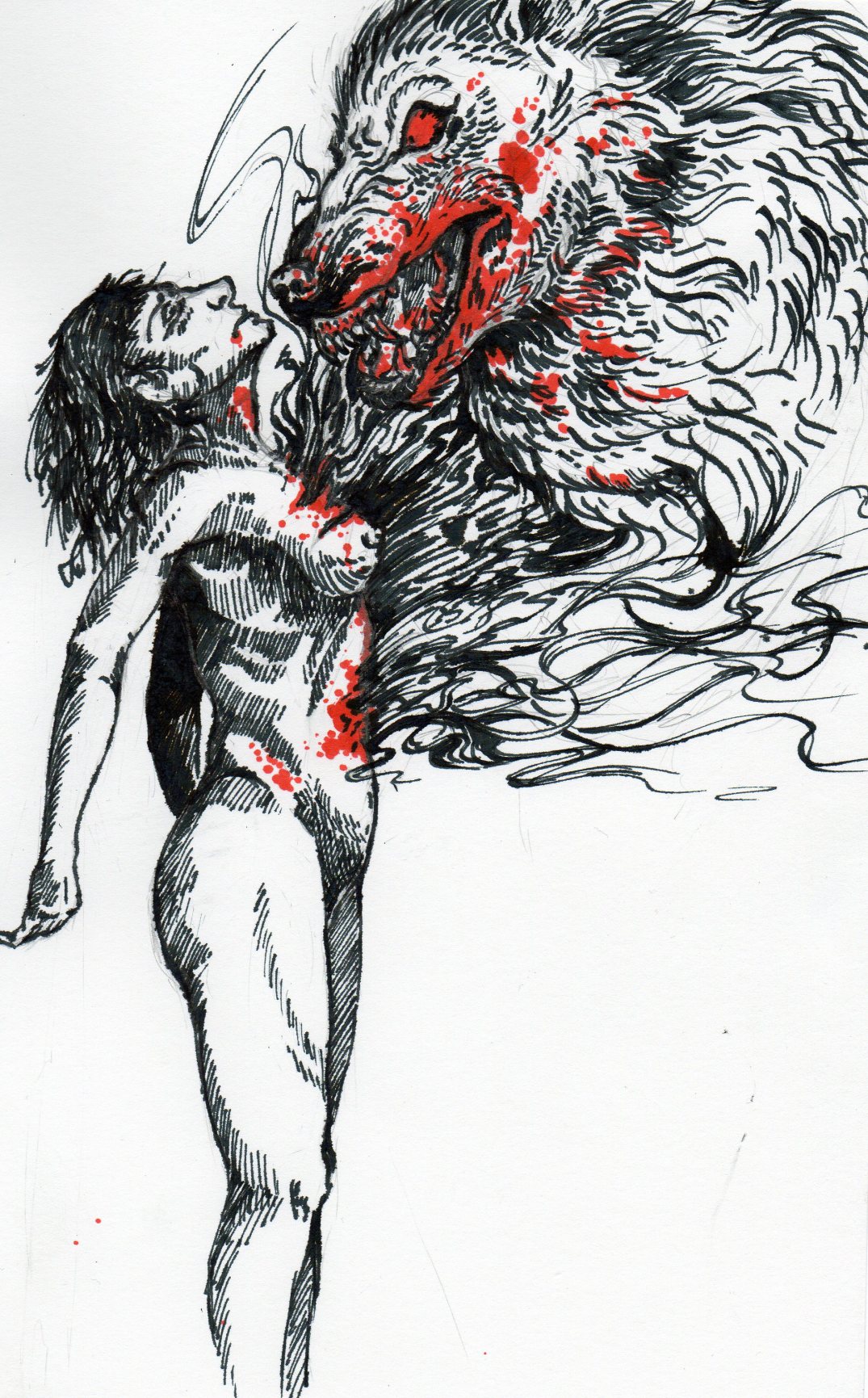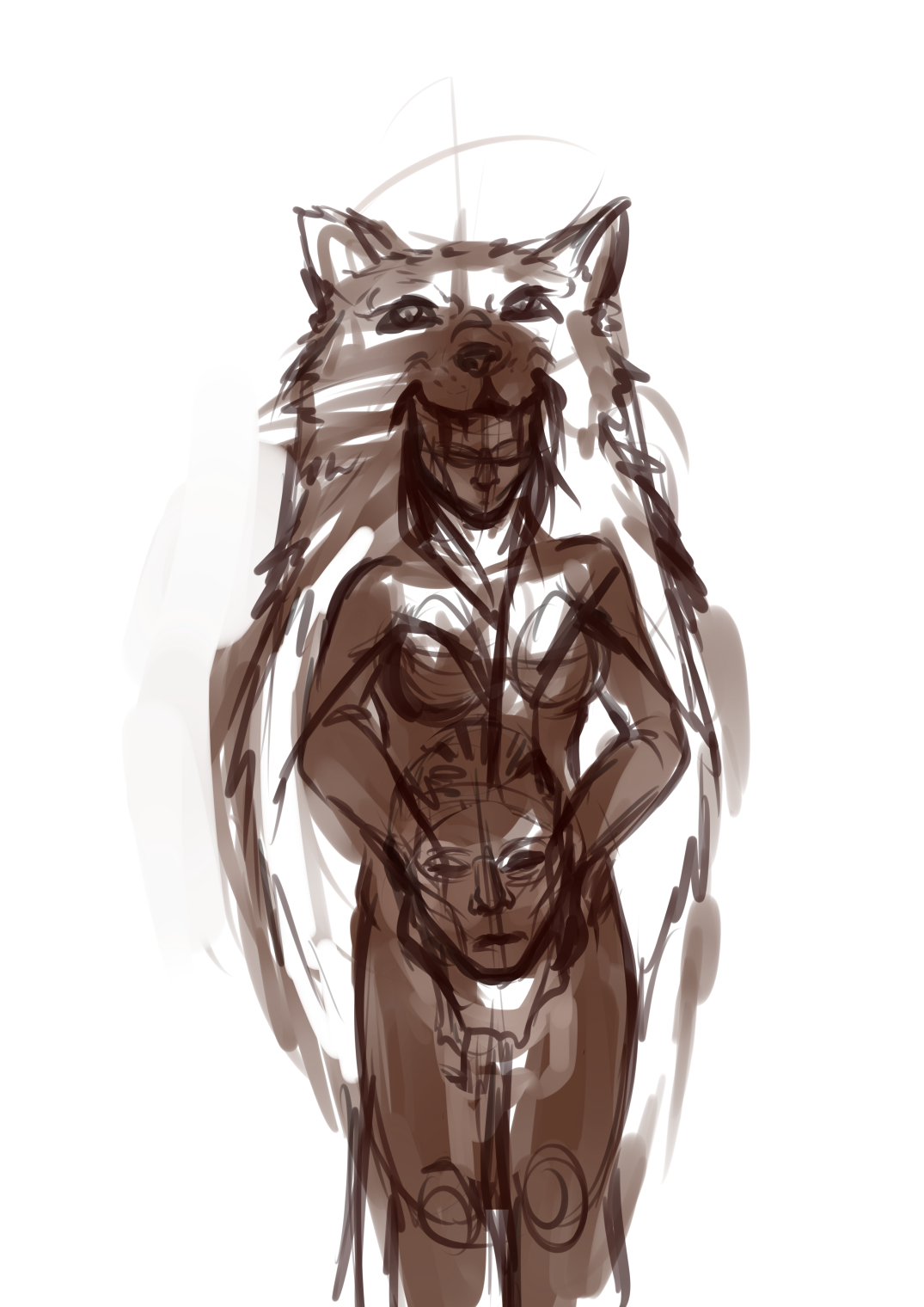In continuing my work from the Autumn exhibition I wanted to work on some more powerful and focused imagery following on from my triptych painting series, which I felt some of the imagery for the Wolf and Sorrow of Songbirds pieces could be a lot more developed. I also wanted to try and develop the narratives within these pieces to be much deeper and more complex in their visual language and what they were able to communicate. I began to do more research into the visual language of fairy tales and the various mythical figures, such as Pan, whom I was drawing on in order to focus the allusions and subversion in using them. With Pan, I wanted to make clear that through using the heavily symbolic masculine imagery of stag antlers that this oppressive, overbearing hyperbolic view of masculinity was damaging and self-destructive in its perpetuation, and even the sensual Greek god is unable to live up to the societal expectations of strength, dominance, sexual prowess and lack of emotion that stereotypical defines the traditional, patriarchal man.
In my previous work I also felt that the connection and tension between the language, text and imagery wasn’t working as fluidly and effectively together as I had wanted. The disconnection was not enough to create a subversive disjoint between the imagery and text and so I sought to experiment with how I could better utilise the environment and cultural/societal heritage of fairy tales from all aspects of its history in order to reinforce the damaging and questionable narratives within them which remain unchallenged whenever recycled around us. Jean Baudrillard’s Simulacra and Simulations has always been a huge influence on my work in its exploration of the saturated, hyperreal media landscape that we exist within, and so appropriation of symbols and language which have ultimately been recycled endlessly so that their is no ‘original’ played a large role in me wanting to further draw from this manipulated and incoherent mass of information and exploit itself in order to expose the vicious cyclical social narrative we are caught in.
My engagement with Kathy Acker, Sharon Kivland and Kara Walker was crucial in me developing my written language in order to expand on the stories that I had been unable to fully explore and realise before, and felt that a book or zine format would allow me much greater room for developing and engaging in the stories of distorted gender, sexual and aesthetic ideals which are indoctrinating a self-destructive mindsight of paradoxical, impossible ideologies. This format is better suited to frame and undermine the concepts of continually reused and perpetuated stories that are still rooted within a system of ideologies which are flawed, simplified and exclusively dictate a stereotypical patriarchal set of ideals. In exploring these concepts their repeated, superficial narratives within a culture of repeated stories, I thought it was best to address it within the parodying framework of a book itself and place these narratives in a new abstracted context in which to examine these constructed ideals.
I wanted to push both the development of my visual and written language as much as I could in order to create a paradoxical tension and acceptance between them, and so I began to experiment with more direct and extreme forms of appropriation in my writing with direct scanning of texts which I then erased to form my own narratives and working with the same tentative enchantment and inherent fear and violence in Kiki Smith and Leonora Carrington’s works. Focusing on imagery which explores the concepts of escapism and release in embracing a potentially darker and more wild, violent base nature and identity and also of constraint, entrapment and control under oppressive and predatory forces which dictate the systems and identities women and individuals are forced to assume and assimilate into in this vicious cycle of control and dictatorship of sexuality, gender roles, autonomy and social limits. I thought it was important to play upon imagery of violence to juxtapose the sense of escapism to emphasise the great damage and extreme lengths undertaken in order to be released of these destructive ideals and that if these narratives are not challenged the result will always be not permanent and potentially not worth the violence and destruction needed to remove ourselves from these systems.
As I move forwards with my work, I hope to incorporate the evolving visual and written language of my works and build on the base of the booklet I already created in order to create a more focused zine for the final exhibition which I am still planning which course of zine aesthetic I wish to go for, either a paradoxically clinical and sleek, professionally printed zine, or one which in engages more heavily in the subversive D.I.Y aesthetic of democratic dissemination.
